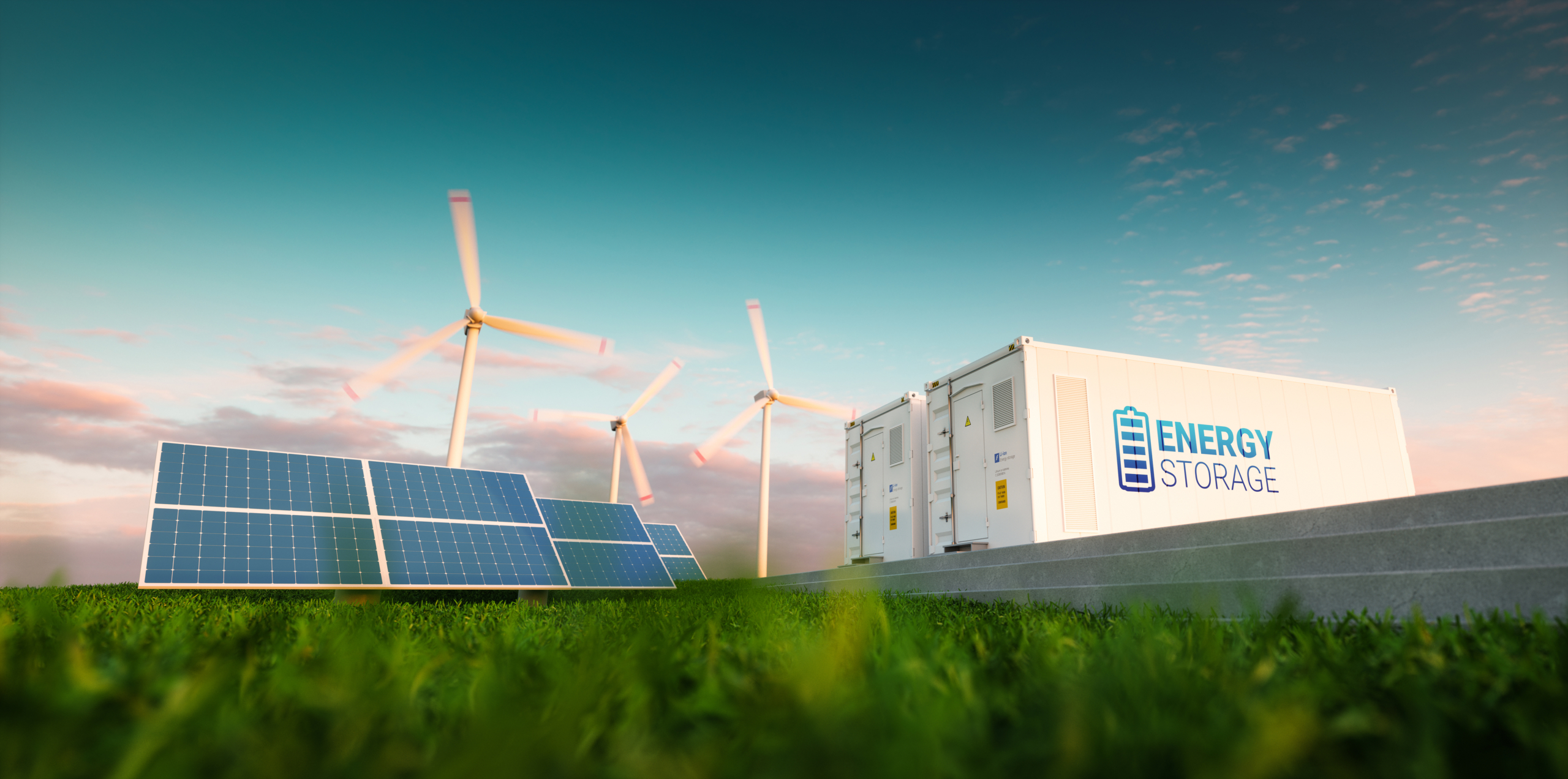About energy storage
In the Netherlands, the energy system is rapidly becoming more sustainable. Large gas and coal-fired power plants are making way for wind and solar farms, among others, resulting in times of large surpluses and shortages. This forces us to be smarter about energy supply and demand. Energy storage - where energy is stored and later released - is a means of giving flexibility to the energy system. Moreover, changes in electricity supply and demand at the local level create capacity problems in the power grid.

Why energy storage?
The integration of renewable energy sources into the electricity system introduces flexibility challenges. Demand and supply fluctuate greatly due to the variability of wind and solar energy. It is critical to bring flexibility into the system, both in terms of demand management and storage and conversion.
Flexibility in the energy system can be obtained in several ways, including demand-side management, curtailment, interconnection, conversion and storage. Storage and conversion play an essential role in ensuring a robust and flexible energy system. Storage can help manage peaks in supply and store excess energy for later use. This approach to storage and conversion encompasses all forms of energy storage and conversion, making the system more flexible and resilient.
What is energy storage?
Energy storage is critical to addressing these challenges. Storage technology can help balance energy supply and demand on different time scales, reduce grid congestion and build strategic reserves. The goal is to create a flexible and stable energy system that is reliable and affordable without dependence on fossil fuels.
There are various forms of energy storage, such as electricity storage, thermal storage and renewable molecule storage. These various techniques can address specific applications and timeframes, from milliseconds to seasons. A successful energy transition requires strategic and accelerated implementation of energy storage.
Enabling the energy transition
For the energy transition to succeed, we must take an integrated approach and apply innovative concepts. Creating space in policy, market models and regulations for innovative solutions is essential. Only by utilizing storage and conversion at all levels can we provide sufficient flexibility to meet the challenges of the energy transition.
In short, energy storage is the key to building a sustainable, reliable and affordable energy system capable of balancing energy supply and demand at all levels and time scales.
Seconds/minutes:
Frequency regulation and balance maintenance on the power grid are becoming greater challenges due to fluctuations in the actual supply of solar and wind.
Hours:
Especially in summer, a fundamental mismatch occurs between high production during the day (when the sun is shining) and peaks in demand in the early morning and evening. The surplus of solar power during the day is so great that panels and parks have to be switched off, while in the evening demand far exceeds supply. With a larger share of solar and wind energy, peak production will also exceed maximum use: additional absorption capacity of the surplus energy is then desirable.
Days/Weeks:
On dark and/or windless days, the solar and wind generation capacity installed in the Netherlands will not be able to meet current demand. Moreover, in the winter months, there may be weeks of both dark and windlessness (the Dunkelflaute).
Seasons:
In the summer months there is a structural surplus of solar power and heat; on the contrary, in the winter months there is a deficit. The average higher production of wind power in winter only partially compensates for this shortage.
Location:
Not only is there a mismatch between supply and demand over time; the distance between the site of generation and the location of the user can also cause problems. Grid congestion is occurring in more and more places in the Netherlands because the transmission grid cannot handle the supply of sustainably generated energy at times of high production. A lack of flexibility can also be seen in surrounding countries to disrupt the energy transition. To prevent this, much more flexibility needs to be brought into the system quickly, to smooth out differences between supply and demand at all levels (time, volume, location). The question is: how?


